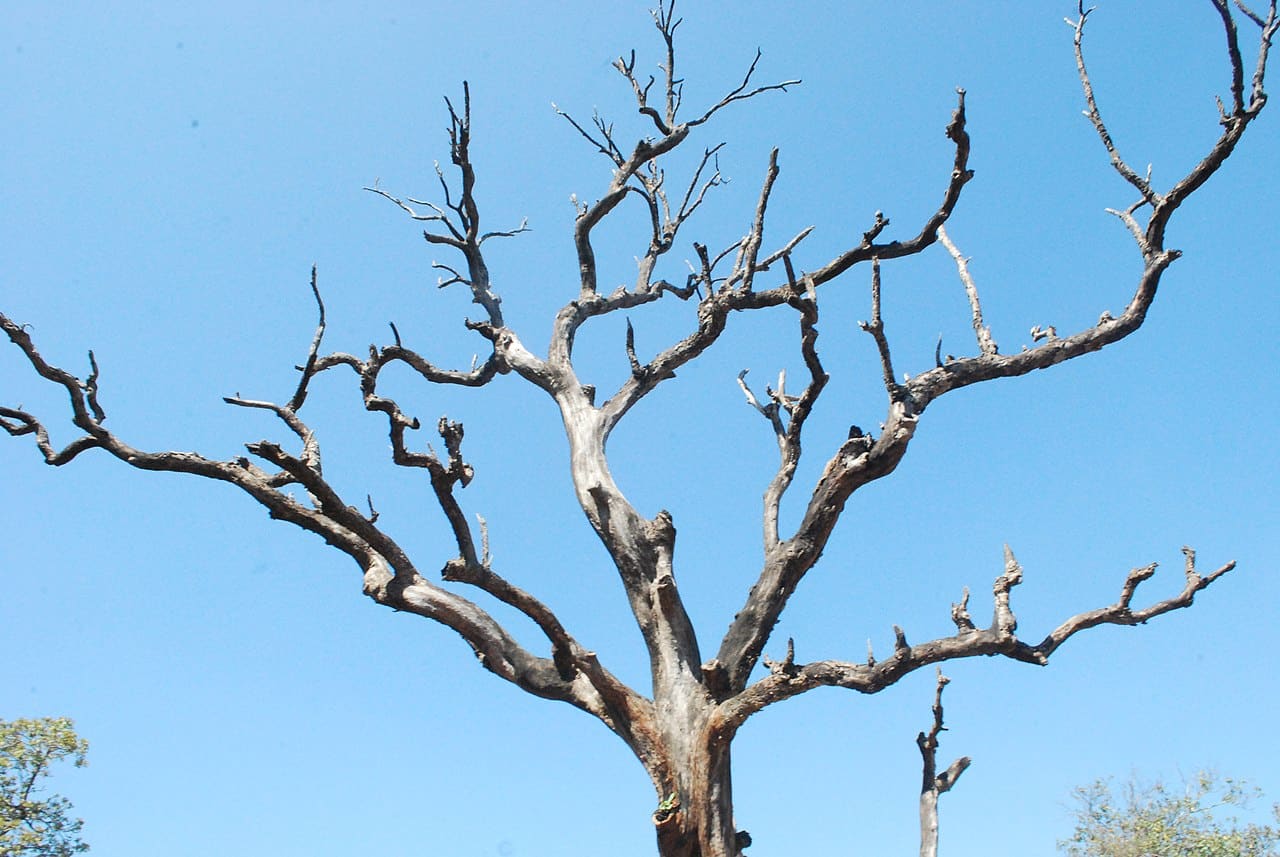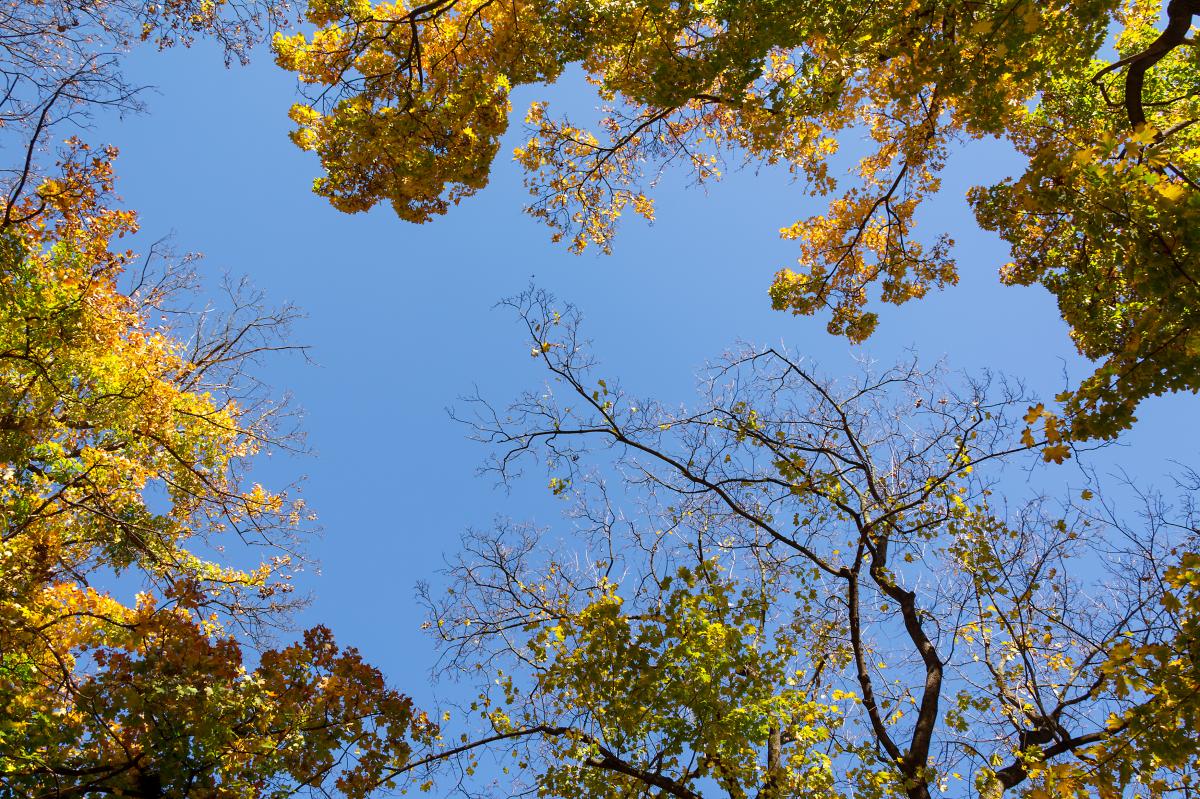
When you see that your tree begins to lose leaves quickly, you may worry, and not a little. Plants need their foliage to be able to photosynthesize, that is, to produce their own food and therefore also to grow and stay alive.
Therefore, if at any time you see that it only has the trunk and branches, it may be that it has problems. Or maybe not. So if you are wondering how can i tell if my tree is alive, in this article I will explain it to you.
When not to worry?

Let's start first trying to give you a joy. We hope your tree doesn't actually have a problem. And it is that, depending on the species, a plant remains without leaves simply because it is its nature. A) Yes, those that are deciduous will be 'peeled' at some point in the year (either in autumn or winter if they are native to temperate regions, or shortly before or at the beginning of the dry season if they are tropical).
In addition, there are certain trees that are marcescent; that is, they stay with the dry leaves until temperatures improve. A few examples are hornbeam, beeches, and many Quercus (Quercus faginea, quercus palustris, Oak o Quercus Pyrenaica, among others).
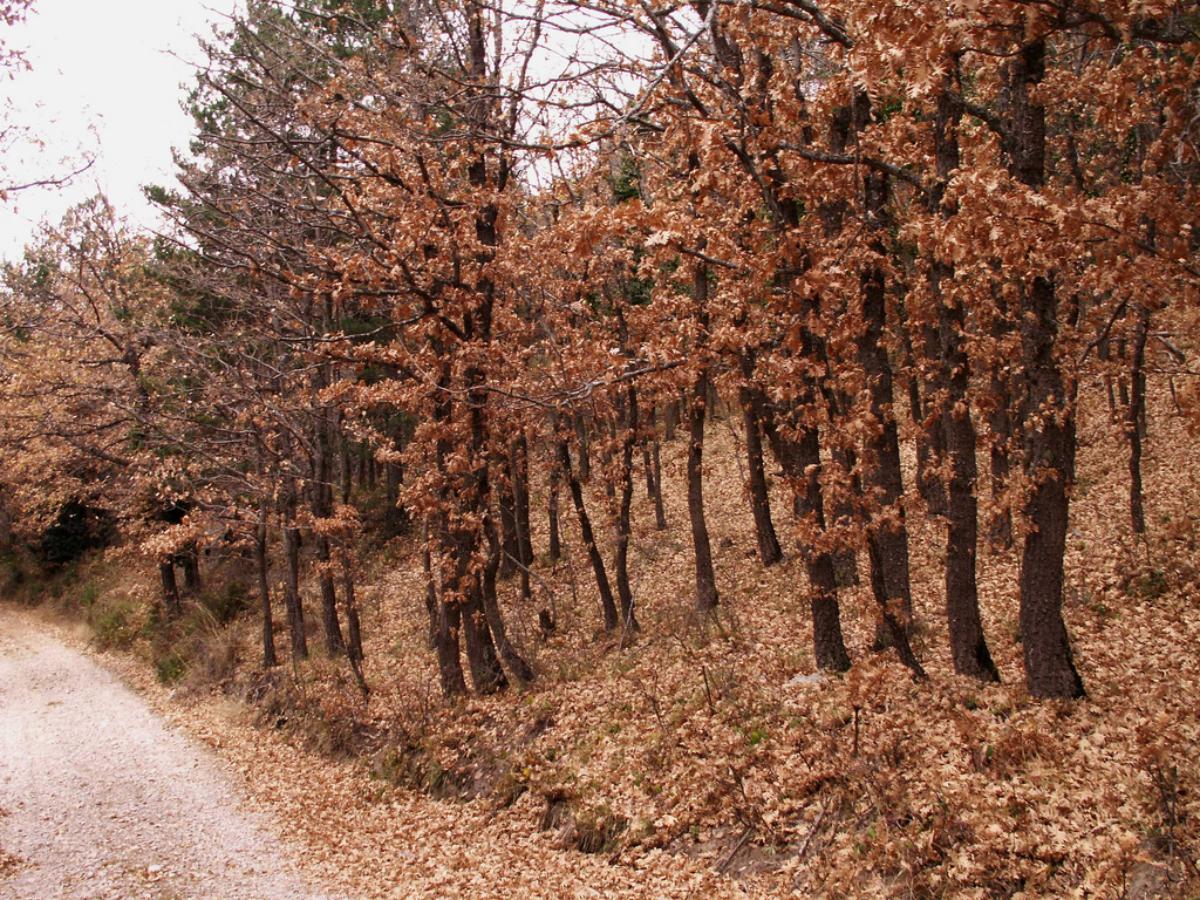
But still there is one more case: those trees that can behave as evergreen, deciduous or semi-evergreen depending on the climate and location. An example that can attract a lot of attention is that of Delonix direction (flamboyant). This species lives in the deciduous forest of Madagascar, and is actually a plant that loses its leaves if conditions do not allow it to continue maintaining them. However, if it is grown in a tropical region where it rains regularly, it will most likely stay with its foliage all year round.
In any of these situations you will not have to do anything. What's more, keep in mind that a tree that does not sprout may have reached the end of its life. In general, those that flower very early, already during the first year of life or shortly after, and / or grow very fast (40 centimeters or more each season) do not usually live more than 40, 50 or 60 years. Thus, for example, the trees of the Fabaceae family, such as the Acacia, Robinia, Albizia, Delonix, etc., will not live long, and neither will citrus. But conifers and slow-growing trees can reach impressive ages.
How do I know if my tree is still alive?
Spring is coming and the tree shows no signs of life. How can we tell if it is still alive or has already dried up? Well, the easiest and fastest way is to cut a small piece of branch, if possible from the previous year. We will test by hand first, because when it is alive it is normal that it does not break. Then, if we want to make sure, we will take, for example, clean scissors or a knife and scratch the bark a little. In the event that we see that it is green or of some yellow or cream hue, we can breathe easy.
Now, if when scratching we see that it is brown, or if it has been easy for us to break it by hand, what we will do is scratch the branch from the part closest to the trunk. If it is still wrong, then we will cut, and repeat these two steps with other branches.
If the plant is really bad, the bark on its trunk could crack. At that point, sadly, there would be nothing that could serve to keep her alive.
Why doesn't my tree sprout?
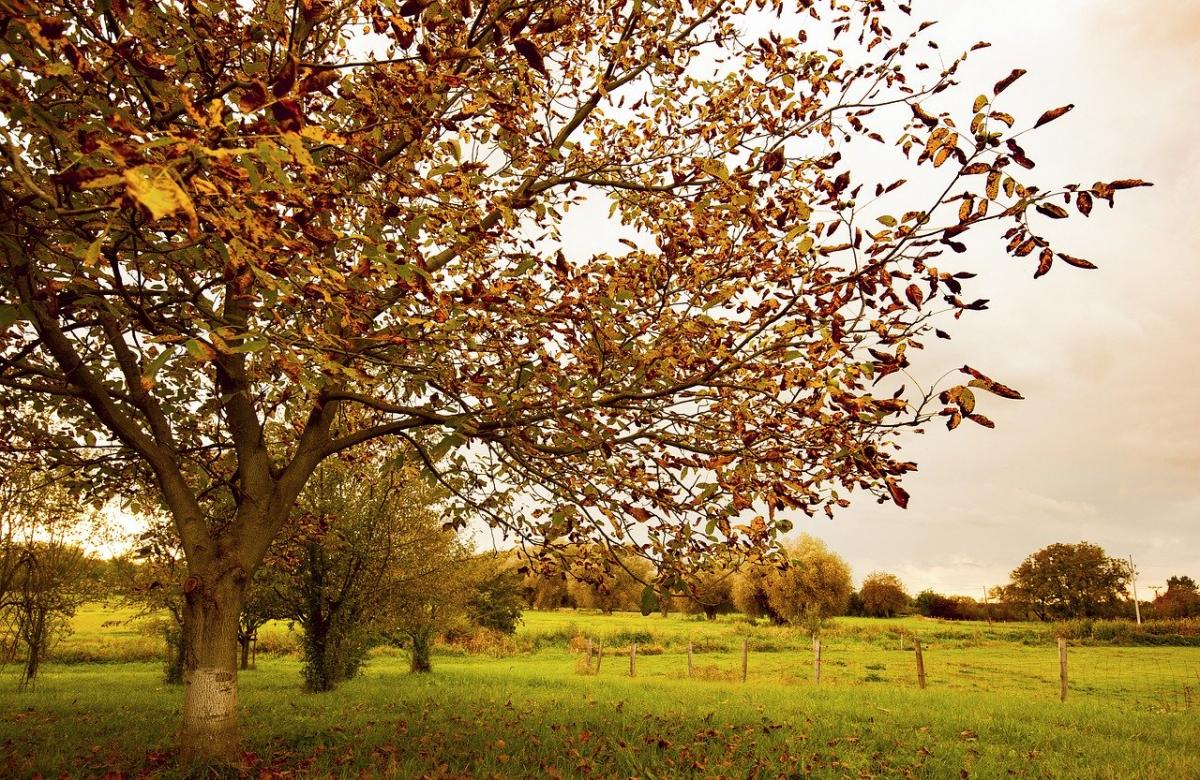
There are several possible causes, so we are going to see them all so that you can find out what has happened to your tree:
Heat stroke in plants
It may seem a bit curious to you that trees can suffer from heat stroke, but yes. That's how it is. During the summer, as a result of high temperatures and / or lack of water, they increase their perspiration to try to stay cool.. In other words, much of the water that its roots absorb is released in the form of steam. This causes that, with the slightest breeze, the air around them causes their own temperature to decrease a little, relieving the sensation of heat.
But it has a drawback: that loss of water can cause the death of the tree, if its root system does not find the amount of liquid it needs in the soil or substrate. For this, When the amount of water lost is greater than that absorbed by the plant, it suffers from heat stroke.
This is quite common in japanese maples, for example, when grown in the Mediterranean. Strong sunshine, bad soil, and / or poor watering make them have a lot of trouble staying hydrated during the summer. Fortunately, one way to help them is by growing them in pots with substrates of volcanic origin, such as akadama (for sale here), placing them in the shade and watering them very frequently with water whose pH is between 4 and 6. Also, a periodic fertilizer in spring and summer (with this fertilizer, for example) will stimulate the production of new leaves and, consequently, their growth as well.
Cold
This is also a fairly frequent problem. A tree, even if it is indigenous, can be cold during the first year if it is grown in a garden or patio totally exposed to the conditions of the place.. Although we will see this more in exotic species cultivated in areas where they are a bit on the edge, for example, if we have a plant that resists up to -3ºC without being damaged but that year frosts of up to -3.5ºC have been registered, any tree it can get cold at some point.
Fortunately or unfortunately, climate is not an exact science. Although we can know the basic characteristics of each type, it is not easy to know when there will be a new and sudden drop in temperatures, or if it will last a few minutes, hours or days. Your tree, if it is outside, is exposed to it. And you have to be able to adapt if you want to get ahead.
Consequently, It is highly recommended to choose species that you know will withstand the climate in your area. But if you have a slightly more delicate one, or if it is young, you should protect it, with a padded, anti-frost fabric, or even in a greenhouse (for sale No products found.) if it is potted.
The soil is not suitable, or has run out of nutrients
No, you cannot grow a tree on any type of terrain. It is a pity, because I would also love to have species in my garden that I cannot have, at least not as I would like. Know the type of soil you have in your garden, and the different types of substrates that exist to grow plants in pots, it is something that is highly recommended to do.
That is, plant a magnolia in clay soil, with a pH of 7 or higher, it is not viable. Planting a carob tree in soil with a pH lower than 6 is not either. In most cases, this soil or substrate will also have to have good drainage, since there are very few trees that can withstand waterlogging.
Another thing that can happen, especially if it is in a pot, is that it has run out of nutrients. And it is that from the first day that the roots are potted they absorb the nutrients from the substrate. Therefore, you must fertilize it during the growing and flowering season, using specific fertilizers, or if you prefer something else, natural fertilizers (guano, humus, compost, etc.).
How to have a healthy and well cared for tree?
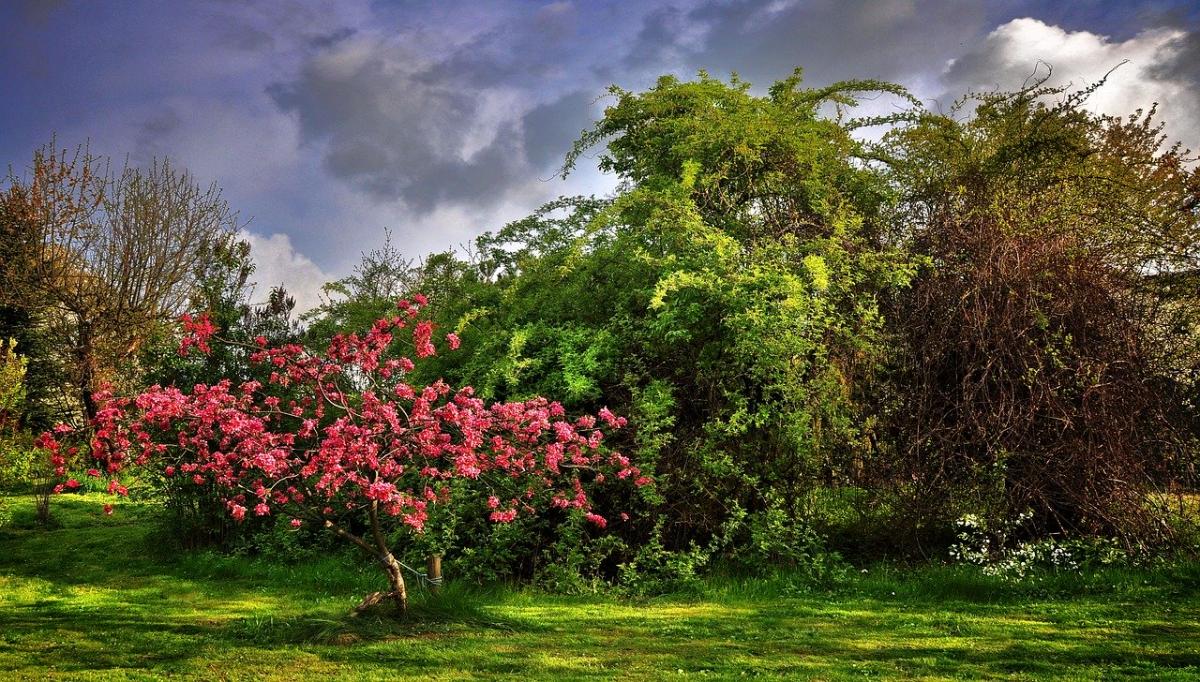
Apart from what we have already said, it is essential to plant it in the right location for it. So we have to find out if it is a sun tree o of Shadows, whether it has invasive roots or not, and whether it is rustic.
On the other hand, you have to try to control the irrigation. We are not going to get better by adding more water. An excess of this precious liquid can seriously damage the roots. In addition, a good subscriber calendar will help you grow healthy.
Pruning, especially drastic ones, and transplants out of season should be avoided. These bad practices can not only diminish, and much, the beauty of your tree, but they will also put it in serious danger of death, since they will weaken it, thus making it more vulnerable to the attack of insects that can become pests.
To finish, as far as possible, you have to plant the tree in an area ... and not move it from there. If the soil is adequate and it is kept at an optimal distance from the house, the best thing for the plant will be that: plant it and leave it alone. Beyond watering and fertilizing it, we should not do anything else.
The plants are not prepared to withstand the transplant, since from the moment they germinate until they die they remain in the same place. So the less your roots are manipulated, the more good they will be.
We hope your tree can recover. If you need more information, click here:
